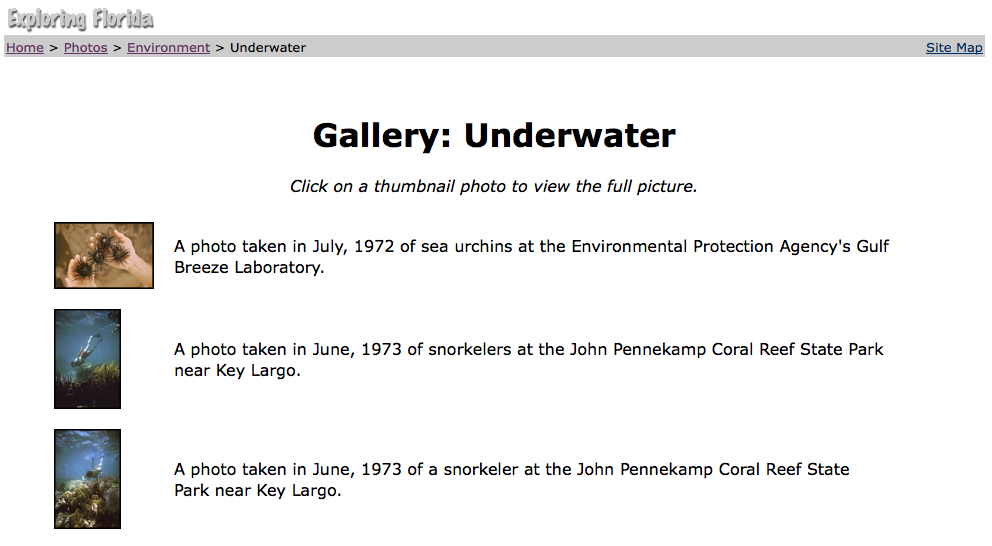John Pennekamp Coral Reef Park and the Florida Keys

Resource: Underwater Photo Gallery Resource: Pennekamp Coral Reef Park homepage Resource: Pennekamp Coral Reef Park details
ACTIVITY
The purpose of this assignment is to discuss the formation and existence of the Florida Keys and its sea life. This project would be a year-long project with a field trip culminating at the end of the year to the John Pennakemp park. Part One discusses the history and formation of the Florida Keys and their purpose as a landmass. Part Two discusses the wildlife and sealife of the Keys and the human population. Part Three discusses the potential issues surrounding the Keys and its natural habitat (polluted waters, hurricanes, rising sea water, population growth, tourism, etc.). Part Four would culminate with the class deciding the best course of action with regards to the Florida Keys (protect, use and discard, etc.). Each reason must be thoroughly backed by scientific research and if the class is divided, a well-structured debate could take place. In each part, students will turn in assignments. Part One will be a group paper collaborated via Google Docs. Part Two will be a powerpoint/Flash presentation detailing the common wildlife and habitat. This presentation must include pictures. Part Three can be delivered as a videotaped news show, or interview with an "expert." And, Part Four would be a collaborative project with the class - a 3-fold board to be displayed in the school's administration office.
Standards this activity addresses:
- Grades 9-12 (1996 Standards)
- Strand D - Processes that Shape the Earth
- 1. The student recognizes that processes in the lithosphere, atmosphere, hydrosphere, and biosphere interact to shape the Earth. (SC.D.1.4) BM 1, 3, 4
- 2. The student understands the need for protection of the natural systems on Earth. (SC.D.2.4) BM 1
- Strand F - Processes of Life
- 1. The student describes patterns of structure and function in living things. (SC.F.1.4) BM 1, 2, 5, 6, 7
- Strand G - How Living Things Interact With Their Environment
- 1. The student understands the competitive, interdependent, cyclic nature of living things in the environment. (SC.G.1.4) BM 1, 3
- 2. The student understands the consequences of using limited natural resources. (SC.G.2.4) BM 2, 4, 5, 6
- Strand H - The Nature of Science
- 1. The student uses the scientific processes and habits of mind to solve problems. (SC.H.1.4) BM 1, 2, 3, 4, 7
- 3. The student understands that science, technology and society are interwoven and interdependent. (SC.H.3.4) BM 1-6
- Grades 9-12 (2008 Standards)
- Body of Knowledge:
- Nature of Science
- Standard 1 - The Practice of Science SC.912.N.1.1 - N.1.7
- Standard 4 - Science and Society SC.912.N.4.1, N.4.2
- Life Science
- Standard 14 - Organization and Development of Living Organisms SC.912.L.14.7, L.14.8, L.14.10
- Standard 17 - Interdependence SC.912.L.17.1 - L.17.10, L.17.12- L.17-15, L.17.17 - L.17-20
- Reading/Language Arts
- Strand: Information and Media Literacy
- Standard 4: Technology LA.910.6.4.1, 6.4.2